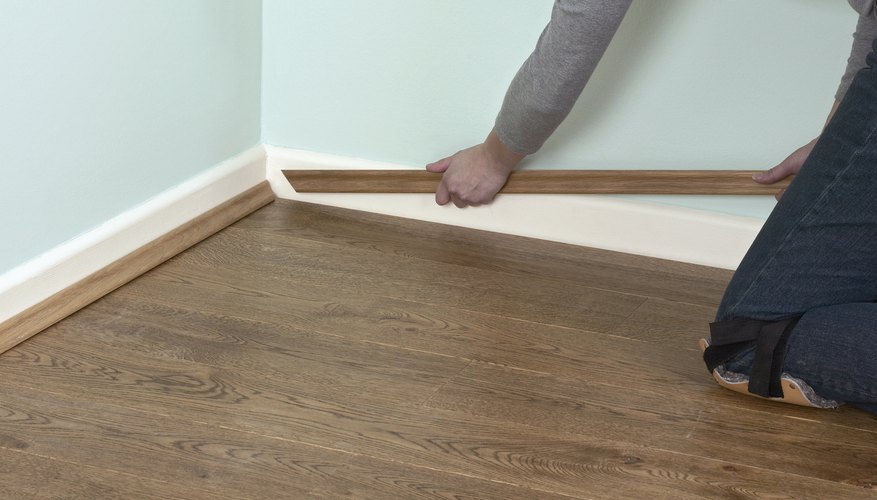Laminate flooring planks are an easy way to get the look of wood flooring in your home. One issue with laminate, however, is that it expands and contracts when temperatures rise and fall. Because of that, it's best to leave a 5/16-inch gap around the perimeter of the room. That way, when the floor expands, it won't hit the wall and buckle, damaging the floor. The best way to hide this gap is with laminate flooring trim that you can install around the edge of the room.
- Laminate flooring planks are an easy way to get the look of wood flooring in your home.
- That way, when the floor expands, it won't hit the wall and buckle, damaging the floor.
Measure your walls with a tape measure, from one end to the other, to determine how much laminate flooring trim to install and how long each trim piece should be.
Cut your wood trim to the appropriate size, using a circular saw.
Mitre the end of each piece with a mitre saw set to cut at a 45-degree angle. A 45-degree angle means each laminate flooring trim piece can sit flush with the next piece when they meet in corners. If you have a section where your trim pieces stop, which is the case when you have a doorway, the 45-degree angle provides a finished look at the end of the piece of trim.
- Mitre the end of each piece with a mitre saw set to cut at a 45-degree angle.
- A 45-degree angle means each laminate flooring trim piece can sit flush with the next piece when they meet in corners.
Set each laminate trim piece in position. Check both ends to make sure you cut the piece to the appropriate length.
Secure your laminate flooring trim to the baseboard, using a hammer and finish nails. Drive the nails through your trim and into the baseboards of your wall. Use one finish nail approximately every 15 cm (6 inches) for a strong hold.
